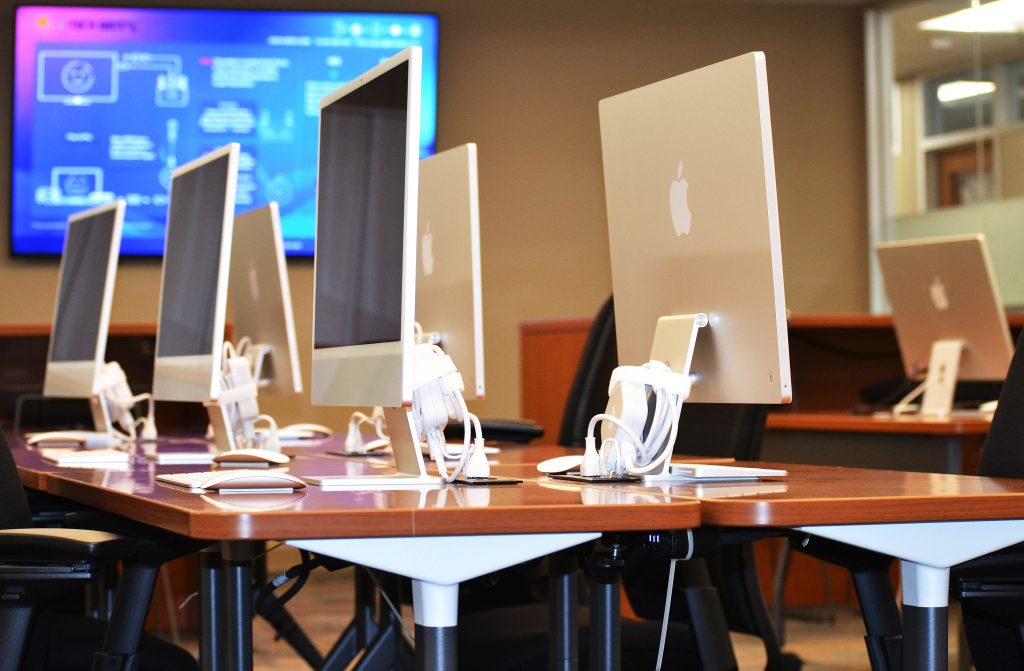EDUCATION: Multimedia lab offers new opportunities for communication majors
By Alyssa Medina
Bridge Staff Writer
Published Wednesday, April 2, 2025
Communication program students are in their second semester of utilizing one of the newest labs on campus. In August 2024, a multimedia lab opened to advance students’ hands-on experience and practical skills.
Associate Professor of digital media and graphic design Analee Paz said technology is a large component of students’ connections to the world, and the opportunity for a grant-funded lab for multimedia courses introduces students to new media studies and technology.

Rows of new Apple Mac M3 computers are the centerpiece for a communication program multimedia lab, located on the third floor of the Academic Innovations Center at TAMIU.
“We saw potential digital media studies in the communication [program], but there was a gap in resources to teach more of that study,” Paz said. “We really needed the resources for us to align with the goals of our administration in the communication field.”
The New Media Innovation Lab, as it’s formally called, was funded through a grant by the late TAMIU president, Pablo Arenaz. The grant seeks any sort of innovative research studies—a call for innovation that professors sought after in communication.
Assistant Professor of communication Di Mu, joined TAMIU last fall and is currently leading Multimedia Production 1 and 2 courses with a combination of graphic design, video and audio production in the lab.
“They’re going to do multiple projects throughout the semester and at the end, they will have a final project as their final portfolio using their time at TAMIU,” Mu explained. “So, they can have projects to showcase to future employers; that’s the advantage of the lab.”
The lab offers up-to-date Adobe software including InDesign, Illustrator, and Photoshop for students to use and explore new aspects of multimedia studies. During the semester, students faced challenges in completing their work due to lack of access to the lab’s software after class-time.
“One fallacy of alignment of tech to course is the students would benefit from more time [outside of class hours] on the computers,” Paz said. “We currently don’t have funding for a lab monitor or any system to keep track of who’s coming in and out of the lab [outside of official class hours].”
The lab’s inaccessibility after class hours conflicts with some students’ priority to work long hours on projects or during free time to work on their studies. Both professors use their office hours to monitor students who work on their assignments.
“Some of the production projects can be really substantial in terms of hands-on labor,” Paz said. “So, it interferes with some of the projects. I have to scale back projects just to make sure the students will have sufficient time to work on them.”
Every two years, Paz and Instructional Associate Professor Thomas Brown lead Dustynation magazine, a collaboration between several different courses and students from different disciplines. The publication focuses on TAMIU’s international mission and students participate through publication design, writing journalistic stories, creating illustrations and photography.
“So, throughout the semester we are working together to publish this publication,” Paz said, giving an example of some of the work performed in the multimedia lab. “At the end of the day, more than 100 people are working on this publication together.”
Interested persons may view prior issues of Dustynation magazine at the following link: Dustynation Archive including 2018, 2019 and 2023. Dustynation production is underway to publish again this semester in 2025.
